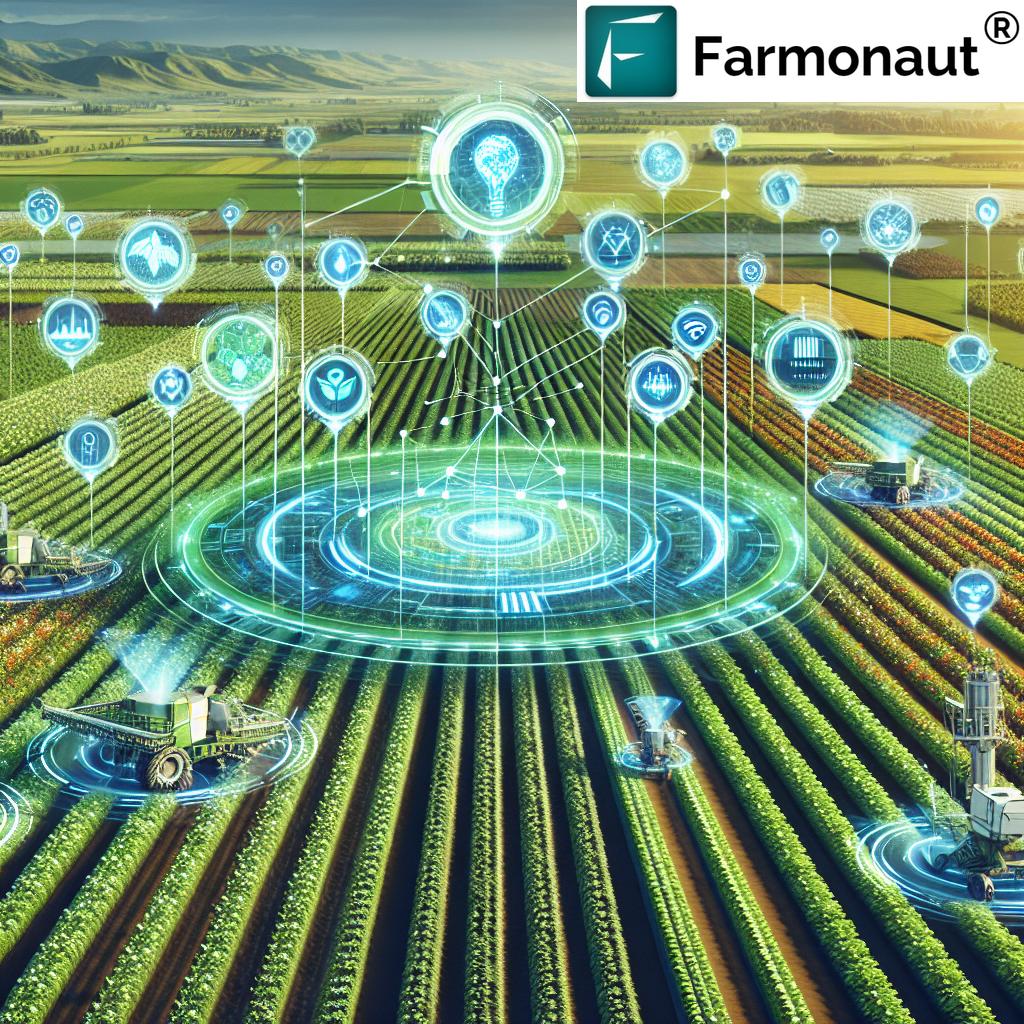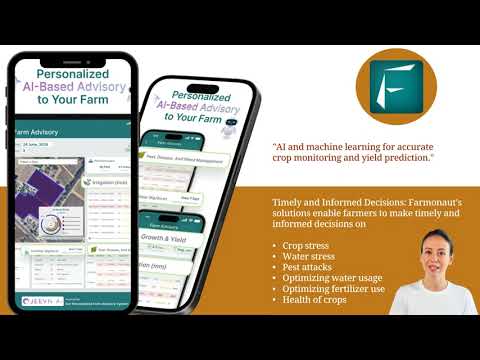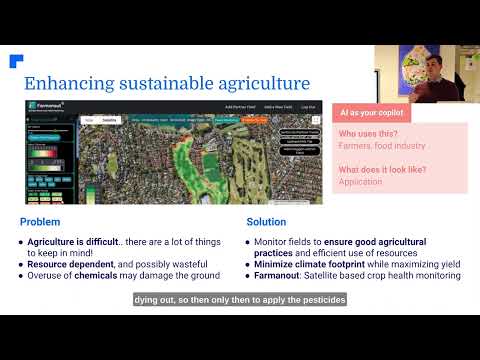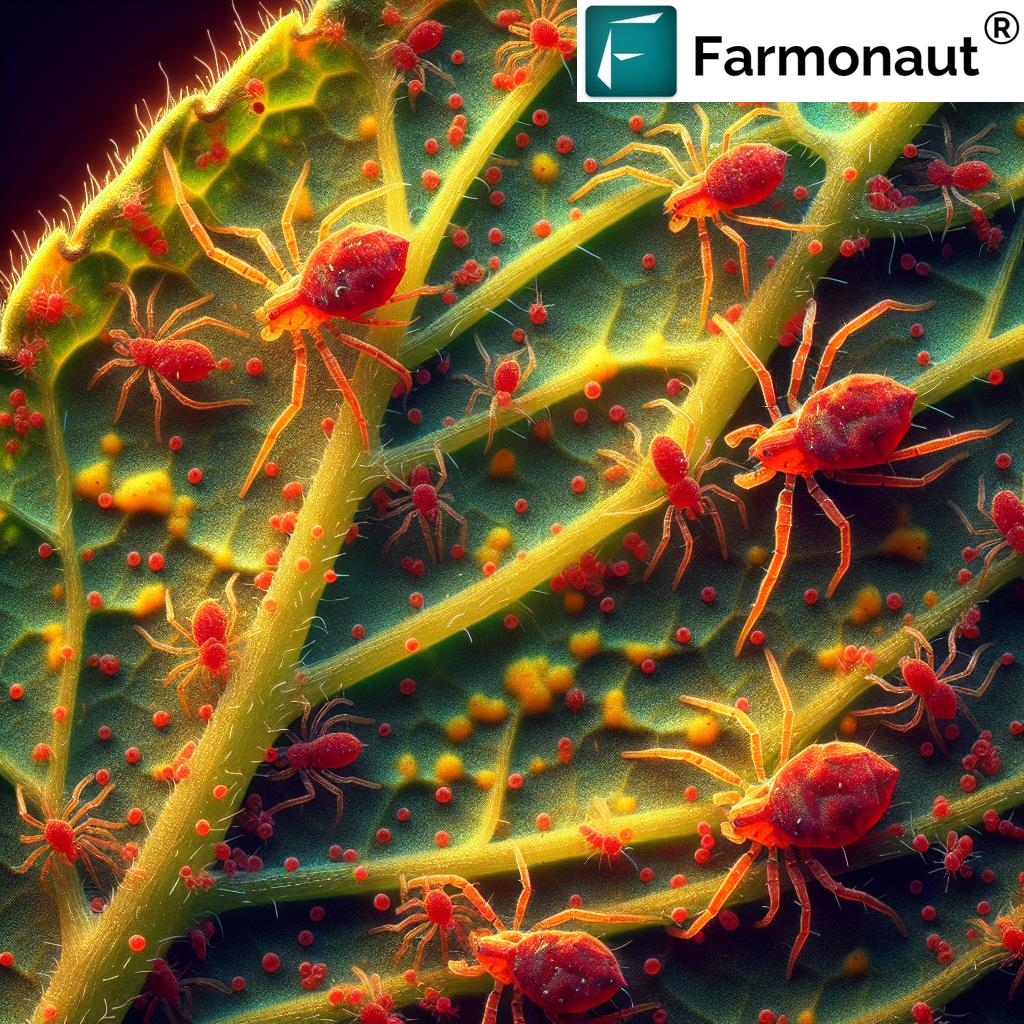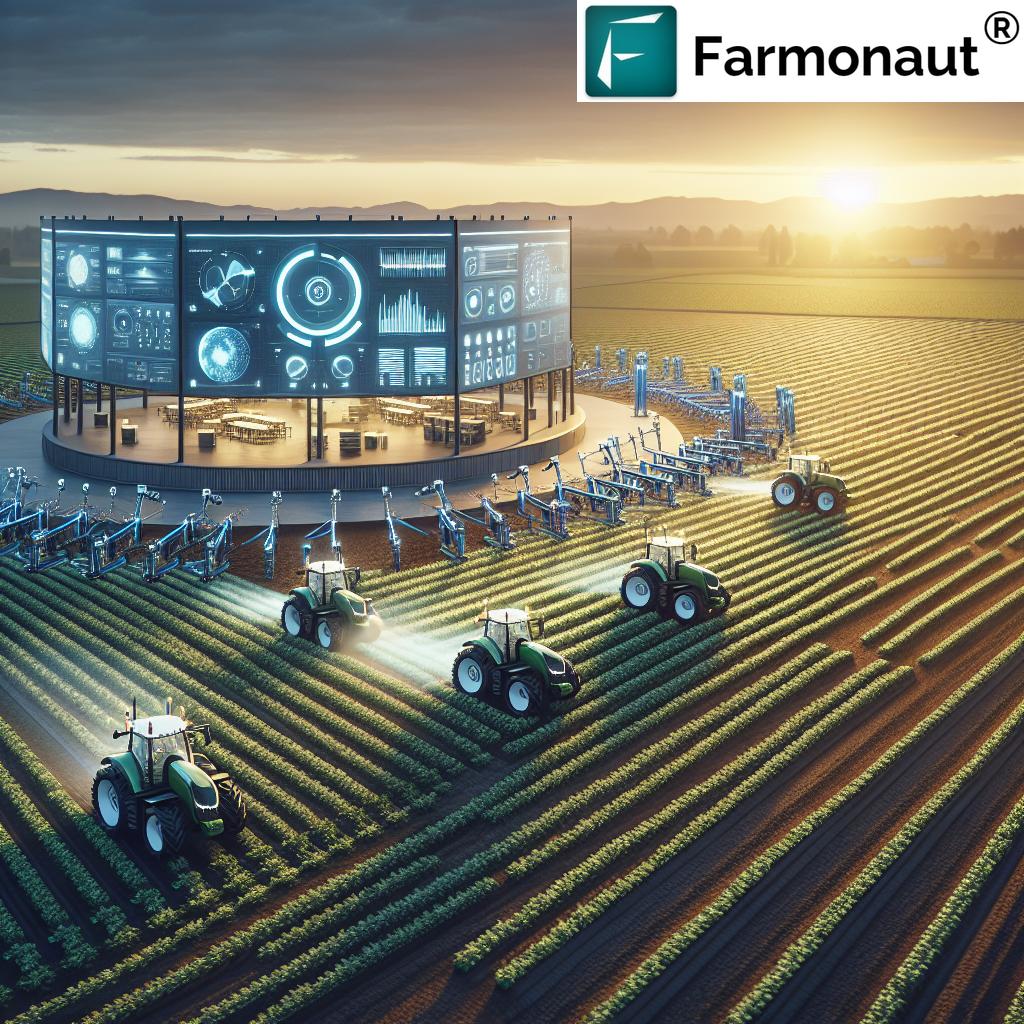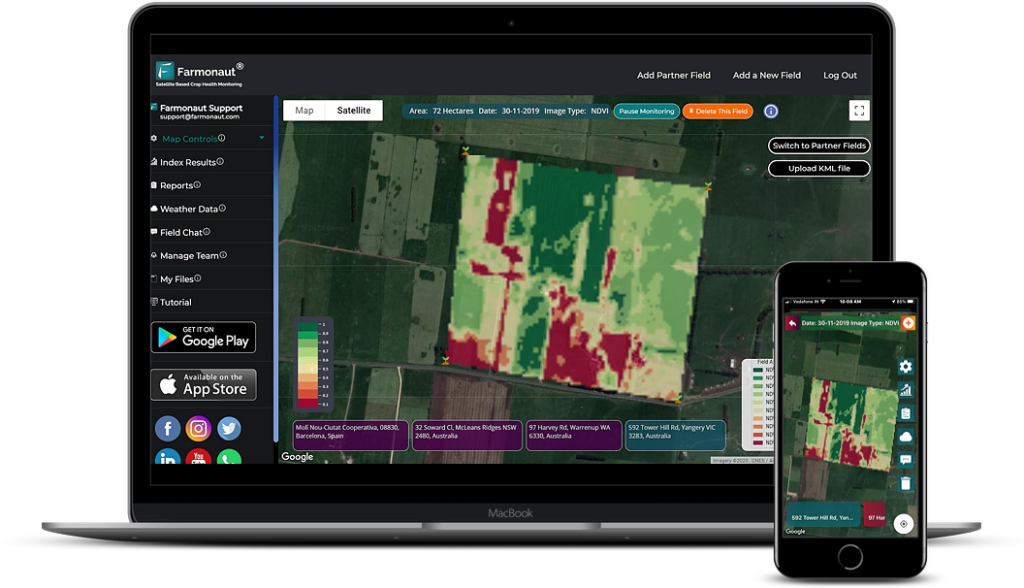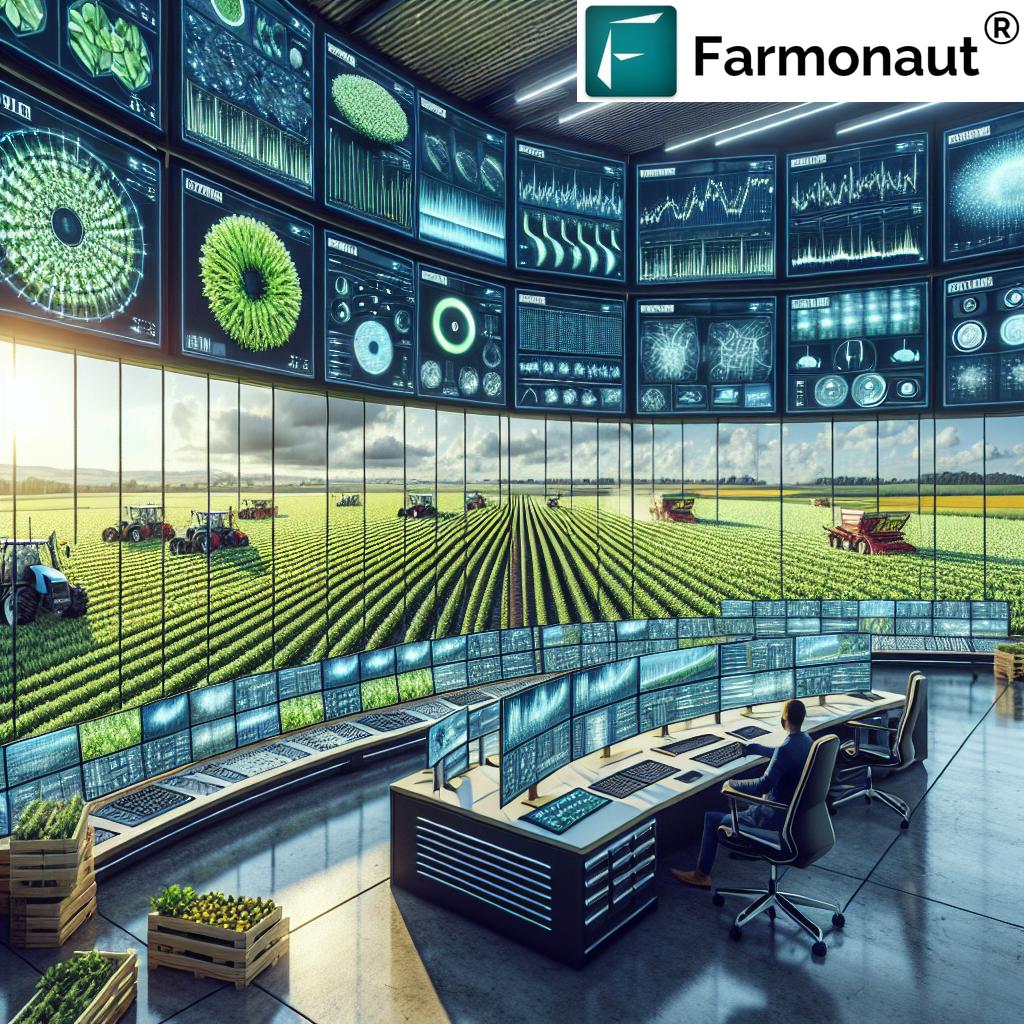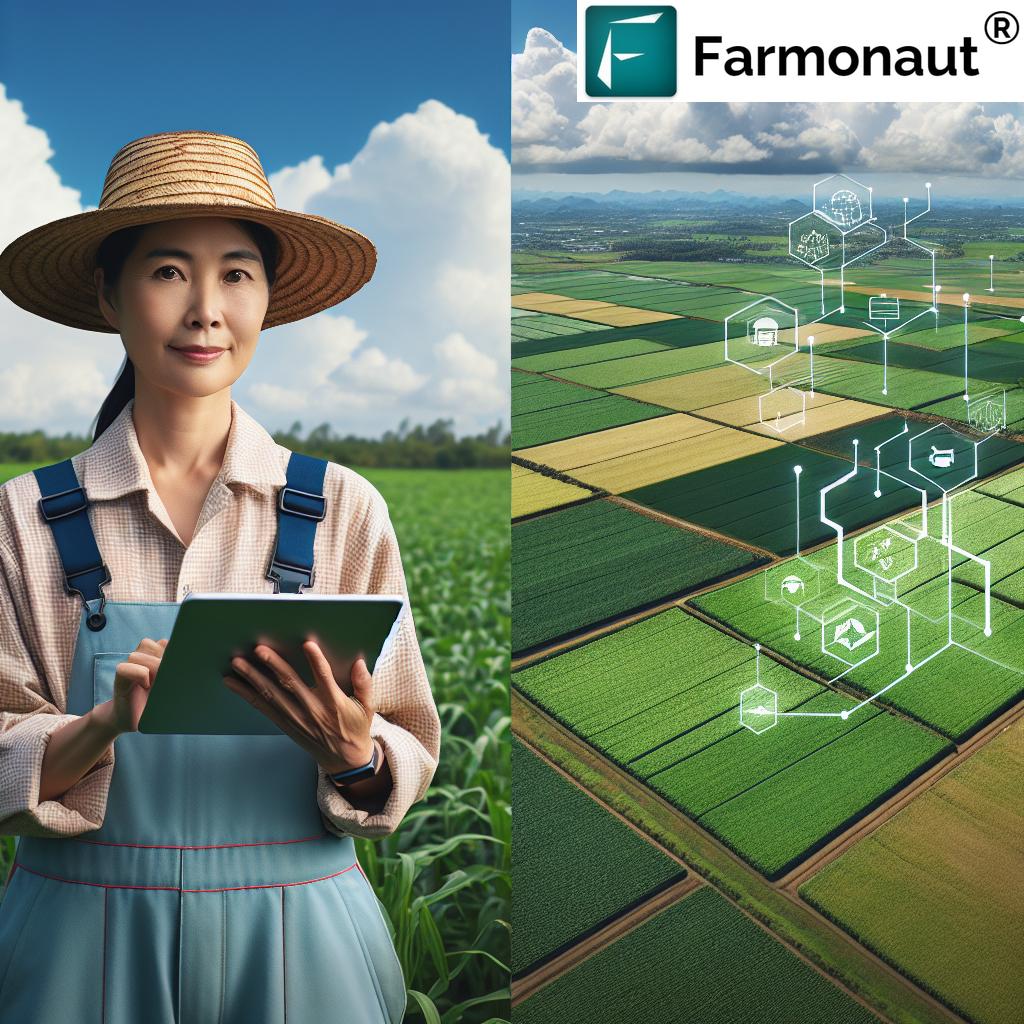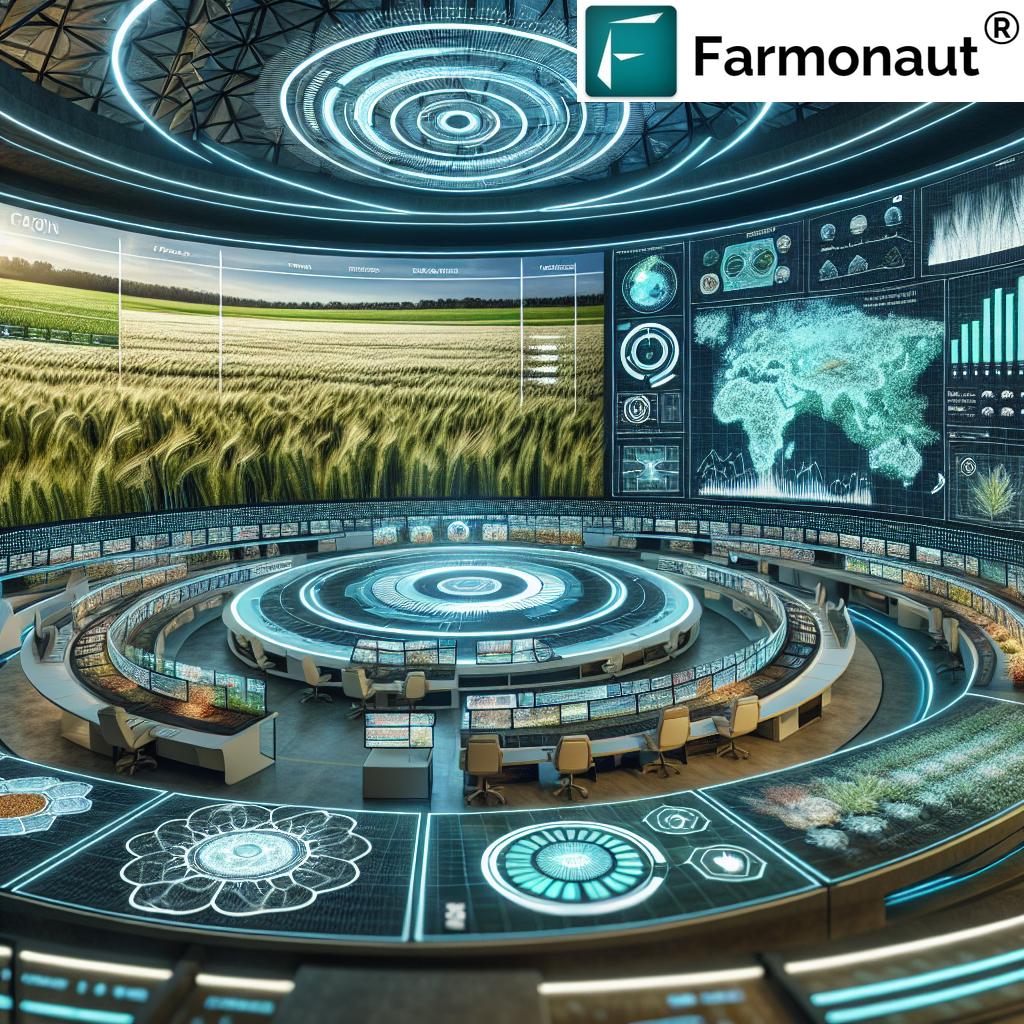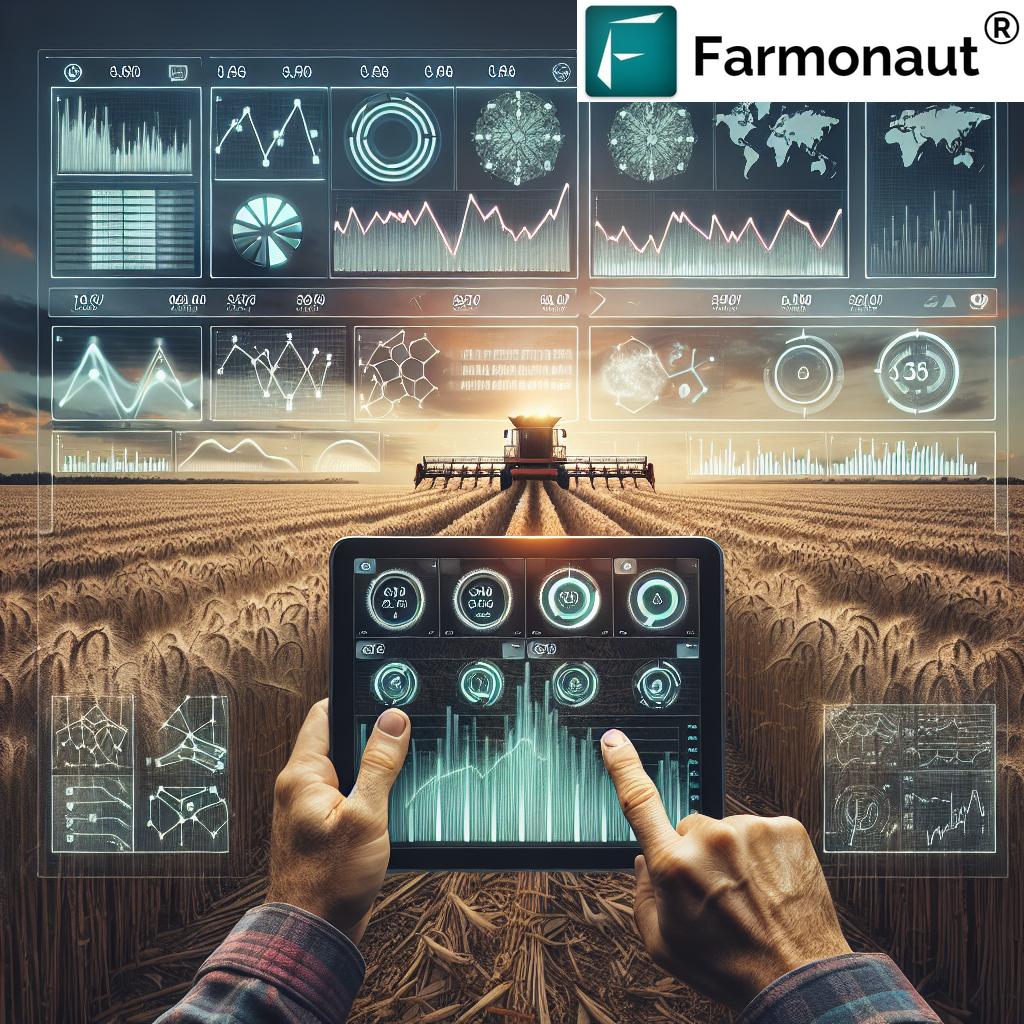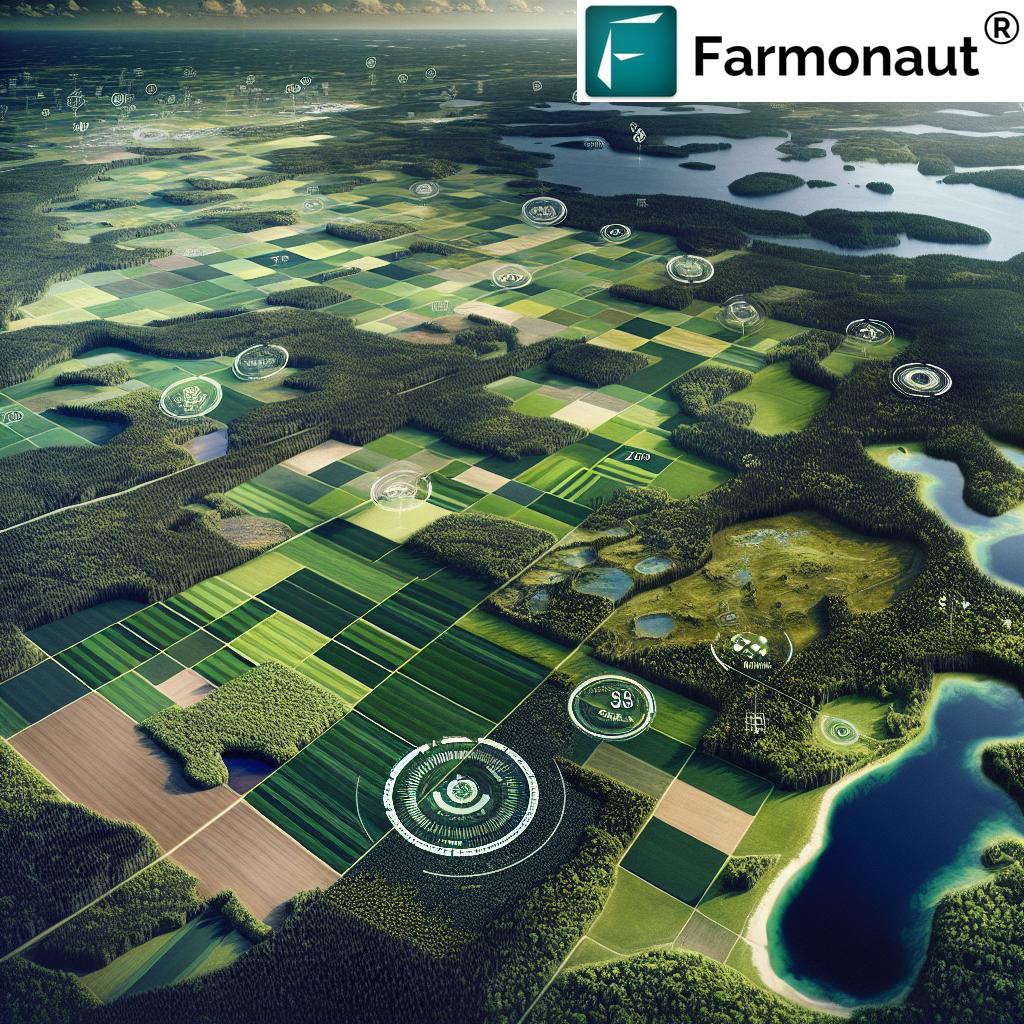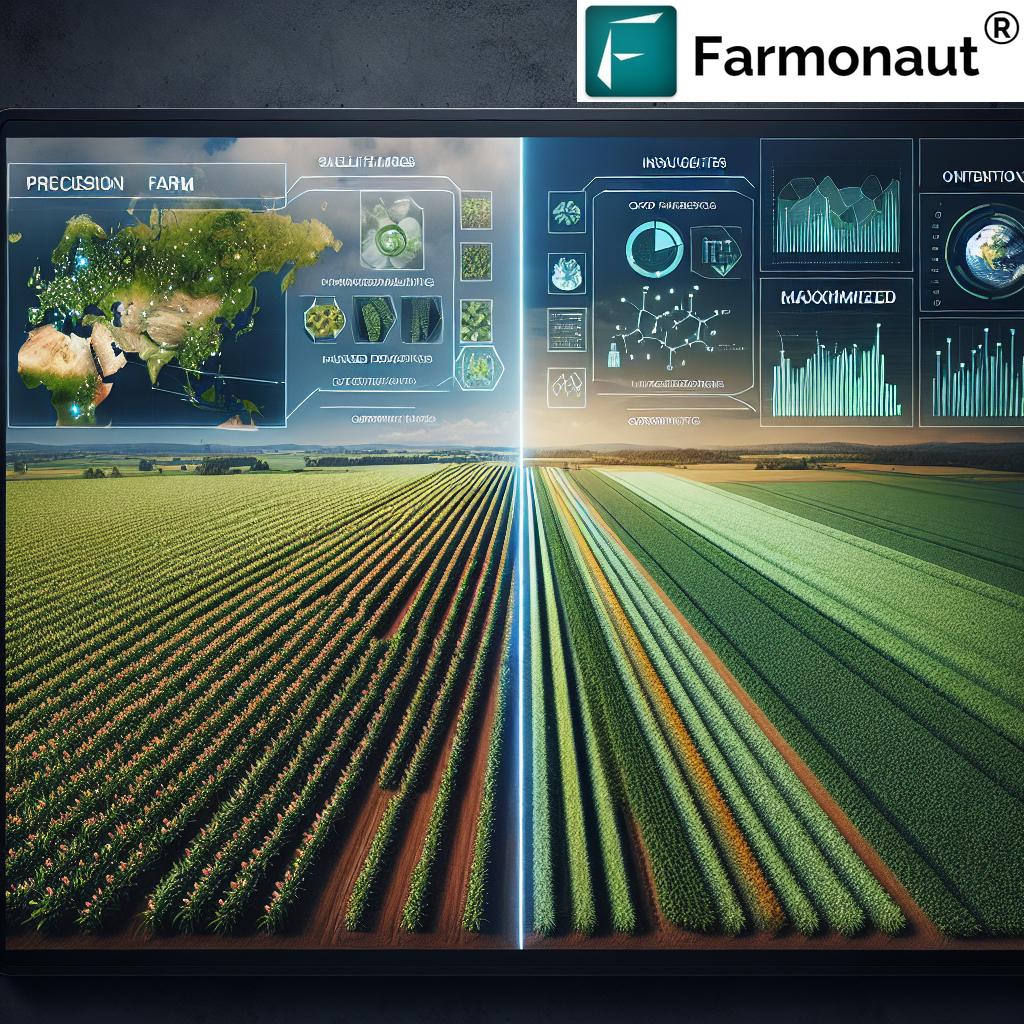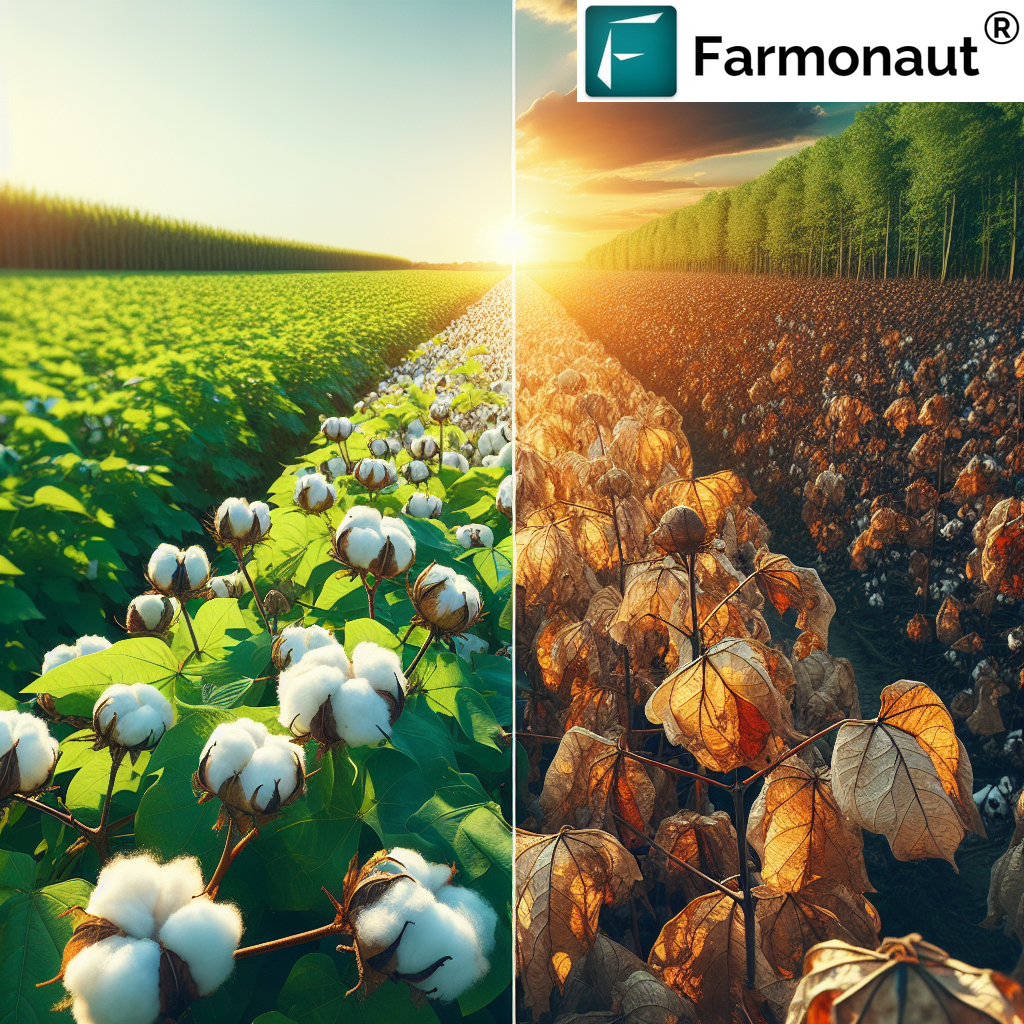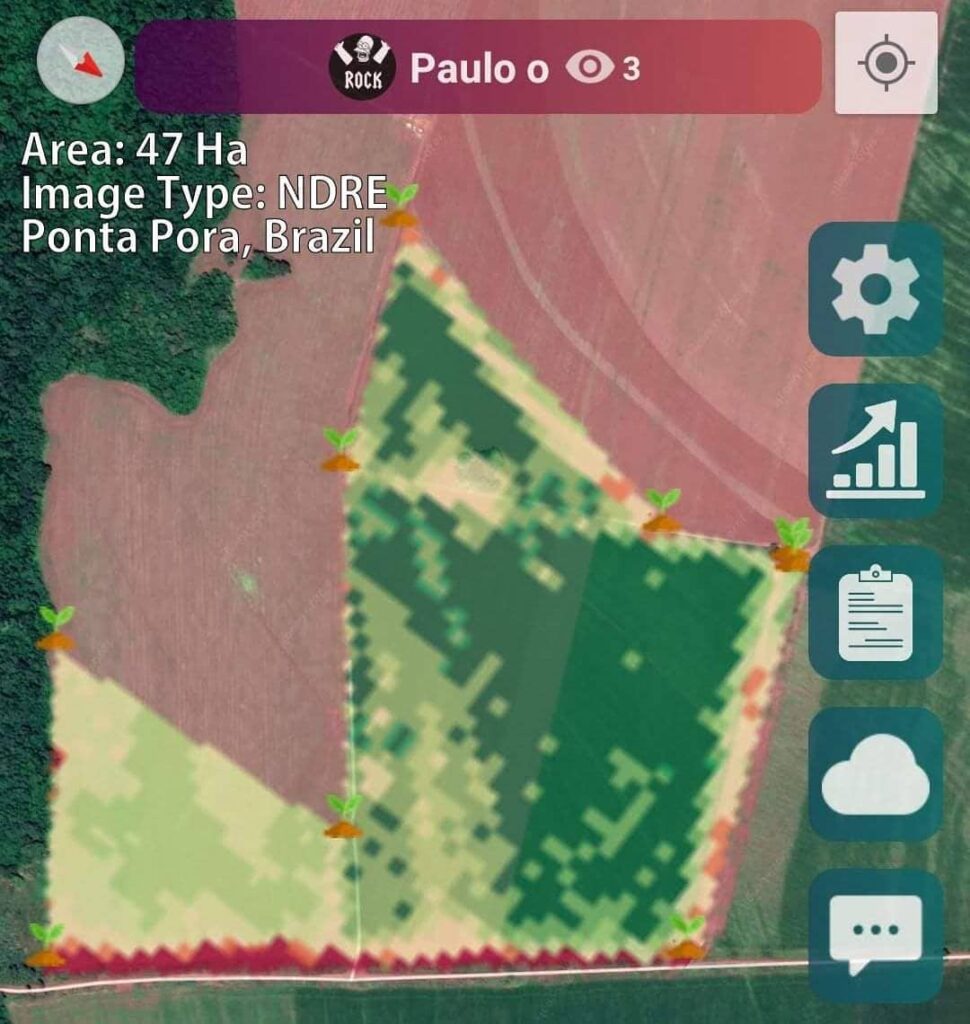Crop Monitoring Market Surges: 2024’s Precision Boom!
“The global crop monitoring market is projected to exceed $4.5 billion by 2024, driven by precision agriculture innovations.”
Introduction to the Crop Monitoring Market in 2024
Welcome to the era of digital agriculture, where crop monitoring market growth has reached unprecedented heights. With agriculture facing mounting challenges—from resource limitations to climate variability—the adoption of precision agriculture solutions and advanced monitoring technologies is not just a trend, but a necessity.
As of 2022, the global crop monitoring market was valued at approximately $2.6 billion. With a projected CAGR of 14.6% from 2023 to 2032, this market is set to reach a staggering $9.8 billion by 2032 (coolest-gadgets.com). The surging interest is largely driven by the need for efficient, sustainable, and data-driven farming practices—all of which optimize yields, reduce resource wastage, and leverage real-time data.
In this comprehensive guide, we—the team at Farmonaut—dive deep into the technologies, key drivers, market segmentation, challenges, and future outlook shaping the crop monitoring landscape. Join us as we explore how digital transformation in agriculture enables farmers worldwide to make better-informed decisions and achieve higher productivity.
Market Overview: Surge in Crop Monitoring Technologies
The crop monitoring market encompasses an array of tools and advanced technologies designed to monitor and manage crop health, soil conditions, and environmental factors. By leveraging IoT in agriculture, remote sensing for crop health, and real-time data analytics, these solutions enhance productivity, optimize resource utilization, and reduce input costs.
Scope and Dynamics:
- 2022 Global Market Value: $2.6 billion
- 2032 Projected Value: $9.8 billion
- CAGR (2023–2032): 14.6%
- Driving Forces: Increased adoption of precision farming, demand for sustainability, need for higher yields, and global food security concerns.
This remarkable growth is propelled by widespread adoption of technologies that enable farmers to monitor conditions, detect issues early, and implement timely interventions, ensuring higher crop yields and minimizing resource wastage.
“Over 60% of large farms adopted advanced crop monitoring technologies in 2024, marking a record surge in digital agriculture.”
Key Crop Monitoring Technologies Revolutionizing Agriculture
Today’s agricultural landscape is being transformed by a suite of precision agriculture solutions. Let’s dive into the core technologies driving the surge:
-
Internet of Things (IoT) Devices
IoT in agriculture empowers us with real-time data captured from soil sensors, climate sensors, and weather stations. These devices monitor soil moisture, temperature, and nutrient levels, enabling precise decisions around irrigation, fertilization, and pest control. As adoption increases, automation enhances resource optimization and yield.
Explore how Farmonaut uses satellite data and IoT for advanced farm resource management.
-
Remote Sensing Technologies
Utilizing satellite imagery, drones, and advanced imaging tools, remote sensing offers comprehensive field mapping and monitoring of large agricultural areas. This technology is crucial for early detection of crop diseases and pest infestations, ensuring timely interventions and healthy crops.
See how Farmonaut’s satellite imagery platform provides ongoing remote sensing for crop health at an affordable cost.
-
Artificial Intelligence (AI) & Machine Learning (ML)
AI in farming leverages powerful algorithms to analyze collected data, predict crop performance, identify potential issues, and recommend optimal farming practices. Machine learning models process large datasets, ensuring precise forecasts and data-backed decisions—critical for increasing crop yields technology.
Benefit from Farmonaut’s AI-based farm advisory system (Jeevn AI) for personalized guidance.
-
Automation & Robotics
Automated machinery such as robotic harvesters and drones drastically reduce labor costs and minimize human error. These automated crop monitoring systems handle tasks like planting, monitoring, and harvesting, contributing to sustainable, efficient, and scalable agricultural practices.
Learn how Farmonaut streamlines logistics and fleet management with integrated fleet management tools.
For each of these technologies, the overarching goal is to use real-time, actionable data to monitor conditions, reduce losses, and optimize resource utilization—empowering us to build a sustainable future for global agriculture.
Crop Monitoring Market Segmentation: Technology, Application & Region
Understanding where and how crop monitoring is implemented is essential to grasping its full market impact.
1. By Technology
- Sensing and Imagery: Utilizes sensors and satellite/aerial imaging to collect environmental and agronomic data.
- Automation and Robotics: Involves automated machinery to streamline field operations, including planting, monitoring, and harvesting.
- Variable-Rate Technology (VRT): Enables precise application of water, fertilizers, and crop protection products, reducing usage and waste.
- Guidance Technology: Provides real-time GPS-based navigation for field machinery, improving operational efficiency and reducing overlap.
2. By Application
- Field Mapping: Detailed mapping for yield variability, risk zones, and management planning.
- Crop Scouting: On-site and remote detection of diseases, nutrient deficiencies, and pest infestations.
- Soil Monitoring: Advanced soil monitoring informs irrigation and fertilization (essential for optimized resource use).
- Yield Monitoring: Tracking and evaluating output for post-harvest planning and benchmarking.
- Weather Monitoring & Forecasting: Integrating climate data and forecasts to guide operational decisions and risk mitigation.
3. By Region
- North America: U.S. leads with early and widespread adoption of precision agriculture and digital solutions.
- Europe: Key countries like Germany and France are heavily investing in smart agricultural platforms and sustainability.
- Asia-Pacific: Rapid digitization in China and India is fueled by food security needs, policy support, and high population pressure.
- Rest of the World: Emerging markets—particularly Latin America and Africa—are gradually increasing their adoption of cost-effective crop monitoring technologies.
Comparison Table: Key Crop Monitoring Technologies & Market Impact (2024 Estimates)
| Technology Type | Estimated 2024 Market Share (%) | Key Application | Estimated Increase in Adoption vs. 2023 (%) | Notable Advantages |
|---|---|---|---|---|
| Remote Sensing (Satellites & Drones) | 35% | Field mapping, yield prediction, crop disease detection | +16% | Large area coverage, high-frequency monitoring, early disease/pest warning |
| IoT Sensors (Soil/Climate) | 27% | Soil health, irrigation, nutrient monitoring | +19% | Real-time, localized data collection, reduced input costs |
| AI & Machine Learning Platforms | 20% | Yield forecasting, pest detection, advisory systems | +22% | Predictive analytics, actionable recommendations, process automation |
| Automated Machinery & Robotics | 10% | Automated planting, weeding, harvesting | +14% | Reduces labor costs, increases efficiency, supports large-scale operations |
| Variable-Rate Technology (VRT) | 8% | Input optimization, precision irrigation and fertilization | +12% | Precision resource application, reduces waste, boosts ROI |
These estimates reflect the explosive adoption of precision agriculture solutions and highlight the impact of technologies such as satellite-based crop health monitoring, AI-powered analytics, and IoT in agriculture. The market surge not only improves productivity but also propels sustainable agricultural growth worldwide.
Key Market Drivers: Precision, Productivity, and Policy
Let’s examine the primary forces fueling the growth and adoption of crop monitoring systems globally:
- Need to Reduce Crop Losses: Advanced monitoring technologies enable early detection of diseases, pests, and adverse environmental conditions. This proactive approach minimizes crop losses and protects farm profitability.
- Higher Yields Compared to Conventional Farming: Precision agriculture solutions help farmers target their interventions and inputs, resulting in increased yields and greater resource efficiency.
- Government Support & Initiatives: Many governments provide incentives, subsidies, and technical support to encourage the adoption of smart farming systems and digital agriculture tools (learn more).
- Global Food Security Pressures: With a rising world population, data-driven farming practices are essential to enhance productivity and ensure food security.
- Sustainability Requirements: Environmental regulations are pushing for energy and water efficiency, carbon footprint reduction, and traceable supply chains. Discover how Farmonaut’s carbon footprinting solution helps agribusinesses meet these goals.
Overcoming Challenges: Security, Connectivity, and Cost
Despite the strong growth trajectory, the crop monitoring market faces specific challenges:
- Cyber & Data Security: The ubiquity of cloud platforms for agricultural data analytics introduces security and privacy concerns. Robust cybersecurity and blockchain solutions are essential. Farmonaut’s blockchain-based product traceability delivers transparent, verifiable, and secure supply chain records.
- Connectivity Gaps & Technical Literacy: Rural regions often lack stable internet connectivity, hindering real-time data collection and technology adoption. Farmonaut’s platform is accessible via both mobile and web apps, designed for usability even in connectivity-challenged environments.
- Upfront Investment Costs: While long-term savings and yield gains are significant, the initial setup for crop monitoring technologies can be prohibitive for smallholders.
- Integration Complexities: Merging new technologies with existing farm practices and legacy equipment requires training and support.
To address these barriers, providers—including Farmonaut—are increasingly focused on affordable subscription models and tools that integrate easily with both modern and traditional farm systems.
Farmonaut: Pioneering Satellite-Driven Crop Monitoring and Farm Management
At Farmonaut, our mission is to democratize precision agriculture—offering satellite-based crop health monitoring, AI-driven advisory, blockchain traceability, and resource management tools directly to farmers, agribusinesses, and institutions around the globe.
- Satellite-Based Crop Monitoring: Our platform utilizes multispectral satellite imagery to monitor vegetation (NDVI), soil moisture, and climatic conditions. This empowers farmers to make decisions about irrigation, fertilization, and pest control with unmatched accuracy—optimizing yield and reducing waste.
- AI-Powered Farm Advisory: Through Jeevn AI, farmers receive timely, personalized guidance and insights that improve operational efficiency and productivity—all underpinned by real field data and predictive analytics.
- Blockchain Traceability: Transparency and security are core to modern agriculture. By leveraging blockchain, our platform delivers end-to-end traceability solutions for a wide array of agricultural supply chains.
- Fleet and Resource Management: We help agribusinesses reduce logistical costs and maximize utilization of machinery (fleet management).
- Environmental & Carbon Footprinting: Our real-time carbon tracking tools allow organizations to monitor and reduce their carbon footprint—supporting regulatory requirements and sustainable farming practices.
Our platform is accessible via Android, iOS, web apps, and robust APIs. Developers and business clients can easily integrate Farmonaut’s satellite and weather data API into their systems. For technical details, visit our API documentation.
We also offer large scale farm management solutions—perfect for commercial plantations and administrative monitoring at regional or governmental scale.
Farmonaut Benefits: Accessibility, Sustainability, and Data-Driven Decisions
- Cost-Effective Precision: Our subscription model ensures affordable real-time monitoring for any farm size—no expensive hardware required.
- Increased Productivity: Real-time crop health, soil, and weather data empowers informed decisions that reduce losses and enhance yield.
- Sustainability: By tracking carbon footprint and promoting efficient resource utilization, Farmonaut supports eco-friendly agricultural growth.
- Transparency (Blockchain): Traceability tools ensure authentic, trustworthy agricultural supply chains for food and textile companies.
- Access to Financing: With satellite-verified crop monitoring, our partners in finance enable optimized and secure lending and insurance for farmers.
- Scalability: Our solutions scale from smallholder farms to large regional programs, catering to individual farmers, agribusinesses, governments, and NGOs.
Through Farmonaut’s API, partners can power other farm management software, mobile apps, and research platforms with live geospatial analytics. See more about our satellite-driven advisory and monitoring platform.
Future Outlook of the Crop Monitoring Market
The future of the crop monitoring market is vibrant and transformative:
- Integration of AI, IoT & Blockchain: The convergence of these technologies will provide farmers with insight-rich, predictive guidance and transparent supply chains.
- Sustainable Growth: As global food demand continues to climb, smart farming systems will be critical to meeting needs without compromising the planet.
- Wider Accessibility: Cloud and satellite-powered solutions (like Farmonaut’s) will make precision agriculture accessible not just for large agribusinesses, but also for smallholders worldwide.
- Policy & Regulatory Evolution: Increasing government mandates around sustainable practices and carbon tracking will further accelerate adoption.
What remains constant is the need for accurate, timely, and actionable data to enhance yields, reduce environmental impact, and modernize global agriculture. With ongoing technological advancements and supportive policy environments, the market will continue its rapid expansion.
Farmonaut Subscriptions & API: Get Started Today
Ready to harness the power of satellite crop monitoring and AI-driven advisory? Farmonaut’s subscription platform offers flexible, cost-effective packages for individual farmers, cooperatives, enterprises, and government agencies. Start today and bring modern, data-driven decision-making to your fields!
For custom integrations and large-scale analytics, explore the Farmonaut Satellite & Weather Data API and our API developer documentation.
Frequently Asked Questions (FAQ)
1. What is crop monitoring?
Crop monitoring involves the ongoing assessment and analysis of crop health, soil conditions, and environmental factors using modern technologies like IoT, remote sensing, and AI, enabling farmers to make data-driven decisions.
2. How does precision agriculture enhance productivity?
Precision agriculture leverages data and automation to precisely apply water, fertilizer, and pesticides—optimizing yields, reducing costs, and minimizing waste.
3. Is Farmonaut’s platform suitable for smallholder farmers?
Yes, Farmonaut’s affordable subscription model and mobile/web interfaces are accessible and easy to use for individual smallholder farmers.
4. How do I access Farmonaut’s services?
Download our mobile apps (iOS/Android), access via the web platform, or integrate directly via our API.
5. Does Farmonaut provide blockchain-based traceability for supply chains?
Absolutely. Our traceability solution supports end-to-end supply chain transparency, improving food safety and consumer trust.
6. What if I have limited internet in my area?
Farmonaut’s tools are optimized for variable connectivity, and our data-light approach ensures you can still access key insights even in rural or low-bandwidth regions.
7. Do you provide solutions for government agencies or agribusinesses managing large farms?
Yes, check out our large scale farm management solutions tailored for plantation mapping, crop monitoring, and administrative oversight.
8. Can Farmonaut assist with carbon footprint monitoring?
Definitely! Our carbon footprinting module helps you monitor, report, and reduce emissions across your agricultural operations.
Conclusion: Crop Monitoring Market’s Precision Boom in 2024
The 2024 crop monitoring market surge marks a new era for global agriculture. Advanced monitoring systems, powered by IoT, AI, satellite technology, and blockchain, are rapidly transforming the way farmers and organizations monitor fields, optimize inputs, and enhance productivity.
With increasing support from governments, technological advancements, and a sharp focus on sustainability, the adoption of precision agriculture solutions is set to rise even further. At Farmonaut, we’re committed to making data-driven, efficient, and sustainable agriculture accessible worldwide—empowering every farm, from small plots to vast agribusinesses, to thrive in the digital era.
Ready to join the revolution?
Access precision farming today—try Farmonaut’s web, Android, or iOS apps or explore our enterprise APIs for integration.
Crop monitoring technologies don’t just increase yields—they secure the sustainable, food-secure future we all depend on.



